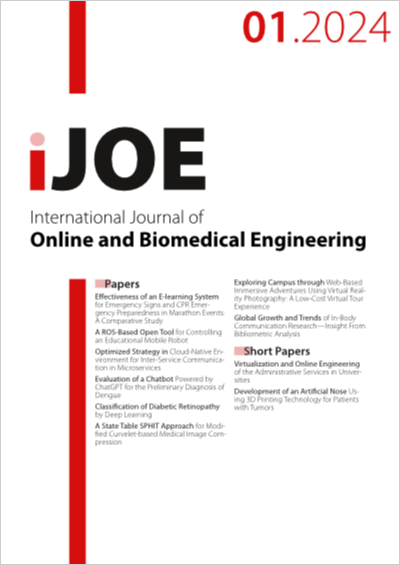Global Growth and Trends of In-Body Communication Research—Insight From Bibliometric Analysis
DOI:
https://doi.org/10.3991/ijoe.v20i01.44967Keywords:
Bibliometric analysis, VOS Viewer, In-Body Communication, Optical Wireless Communication, Implants, In-Body devicesAbstract
A bibliometric analysis was conducted to examine research on in-body communication. This study aimed to assess the research growth in different countries, identify influential authors for potential international collaboration, investigate research challenges, and explore future prospects for in-body communication. A total of 148 articles written in English from journals and conference proceedings were gathered from the Scopus database. These articles cover the period from 2006 until August 2023. VOS Viewer 1.6.19 and Tableau Cloud were used to analyze the data. The analysis reveals that research on in-body communication has shown fluctuations but overall tends to increase. The United States, Finland, and Japan were identified as the leading countries (top three) in terms of publication quantity, while researchers from Norway, Finland, and Morocco received the highest number of citations. The University of Oulu in Finland has emerged as a productive institution in this field. Collaborative research opportunities exist with the countries mentioned above or with authors who have expertise in this topic. The dominant research topic within this field pertains to ultra-wideband (UWB) technology. One of the future challenges in this field is the exploration of optical wireless communication (OWC) as a potential communication medium for in-body devices, such as electronic devices implanted in the human body. This includes improving performance to meet the requirements for in-body communication devices. Additionally, this paper provides further insights into the progress of research on OWC for in-body communication conducted in our laboratory.
Downloads
Published
How to Cite
Issue
Section
License
Copyright (c) 2023 Syifaul Fuada, Guanghui Ma, Marcos Katz

This work is licensed under a Creative Commons Attribution 4.0 International License.



